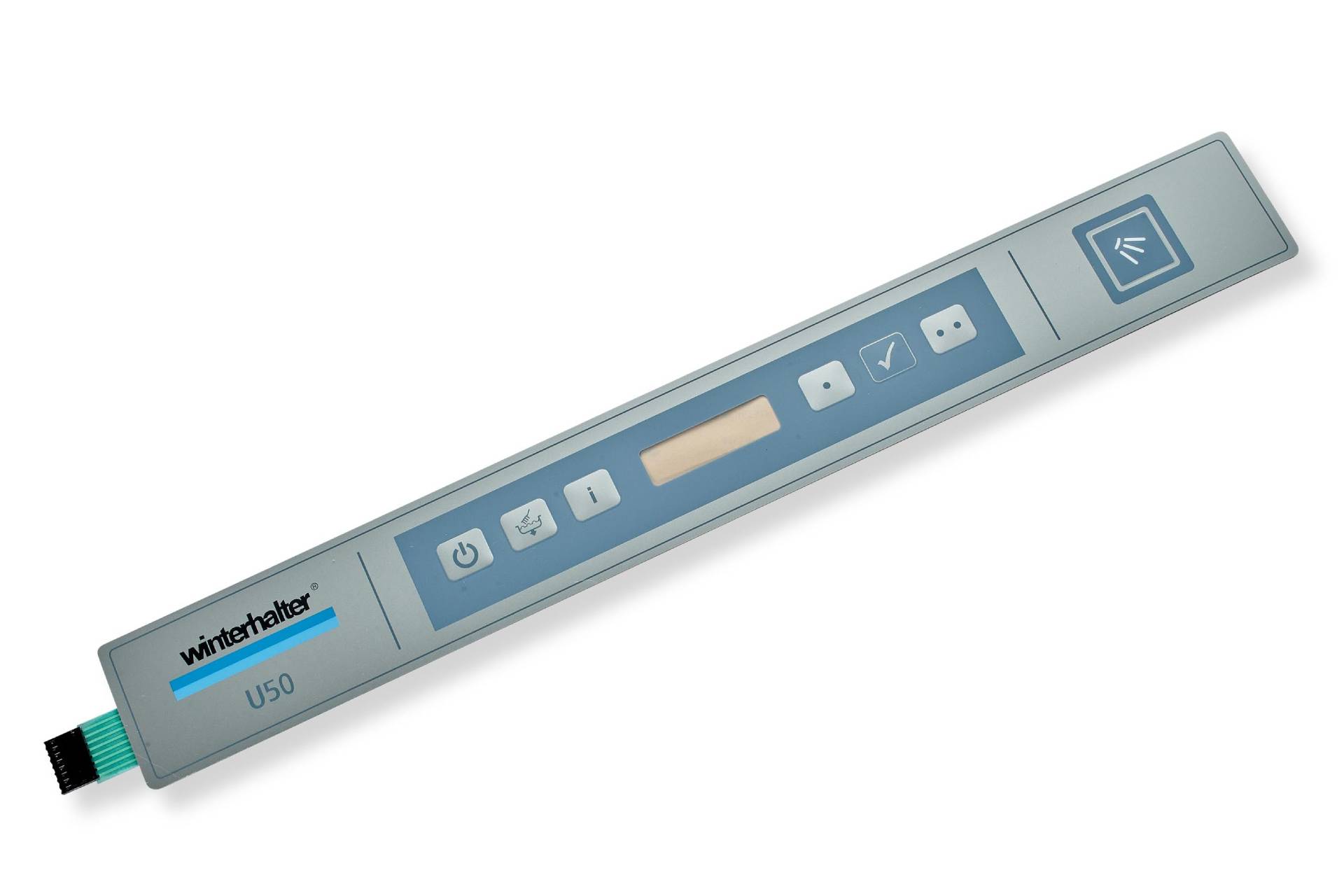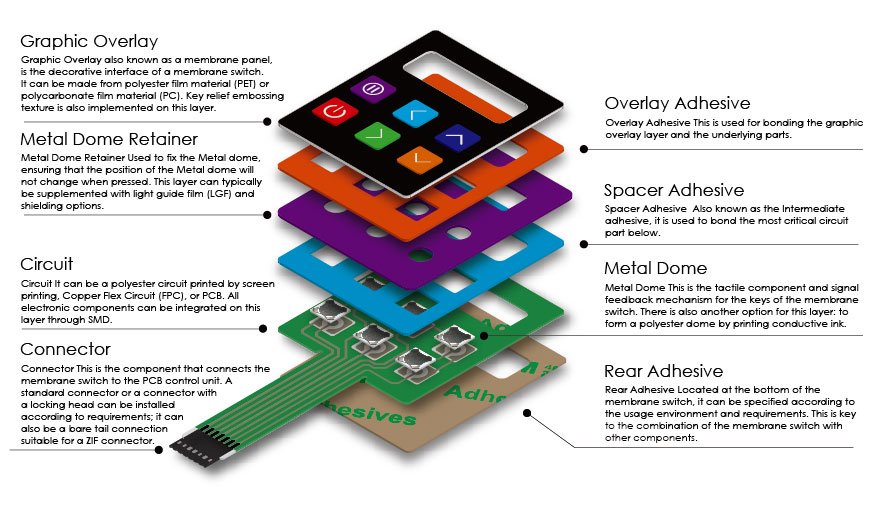Membrane switch vs. traditional buttons: what’s better?
Understanding the Value of Membrane Layer Change in Modern Electronic Devices
Membrane switches are essential components in modern-day digital gadgets. They provide a blend of functionality and design that enhances customer interaction. Their lightweight and long lasting nature makes them suitable for numerous applications. As industries develop, the need for modification and advanced features expands. Understanding just how membrane layer switches add to development reveals their relevance in shaping the future of electronics. What exists ahead for this modern technology?
The Basics of Membrane Layer Switch Modern Technology
Typically ignored, membrane switch modern technology plays a vital duty in the contemporary electronic devices landscape. These devices, composed of numerous layers, serve as interface for numerous electronic products, varying from household home appliances to clinical equipment. A common membrane layer button contains a graphic overlay, a spacer layer, and a circuit layer, which are diligently put together to create a practical interface.When stress is related to the overlay, the circuit layer is finished, permitting signals to be transmitted to the gadget. This modern technology is known for its adaptability, making it possible for customization in functionality, design, and shape to satisfy certain customer demands. In addition, membrane layer buttons are lightweight and slim, making them appropriate for applications where area is a premium. Their toughness and resistance to ecological variables better boost their allure, guaranteeing they can hold up against harsh problems while keeping capability. On the whole, membrane layer button innovation is important to producing effective and easy to use electronic gadgets

Key Advantages of Membrane Switches Over
Membrane layer switches over deal several vital benefits that make them a preferred selection in different electronic applications. Their layout permits for a small form aspect, enabling suppliers to produce sleek and light-weight devices. In addition, membrane buttons are resistant to dirt, moisture, and chemicals, which boosts their toughness and longevity popular environments. The responsive feedback supplied by these switches can improve customer experience, making them easy and instinctive to operate.Furthermore, membrane switches can be tailored with diverse graphics and colors, permitting distinct branding possibilities. The production process is normally cost-effective, particularly for high-volume manufacturing, as it reduces assembly time and streamlines layout. Finally, membrane layer switches over require very little upkeep, adding to lower overall functional prices. These advantages highlight their growing appeal in modern-day electronic devices, where reliability and easy to use user interfaces are essential.

Applications Across Various Industries
The convenience of membrane switches enables their widespread fostering across numerous markets. In the clinical field, they are commonly utilized in diagnostic devices and patient surveillance systems, providing a sturdy interface immune to contaminants. The auto industry makes use of membrane switches for control panel controls, enhancing customer experience with sleek styles that hold up against extreme problems. In consumer electronics, they act as control panels for tools such as microwaves and coffee machine, supplying an user-friendly user interface that is very easy to clean. The aerospace market uses membrane switches in cockpit controls, where integrity and space efficiency are vital. Furthermore, the commercial industry leverages these buttons in equipment and control systems to guarantee robust operation sought after settings. This broad variety of applications emphasizes the flexibility of membrane switches, making them essential elements in boosting capability and user interaction across diverse technological landscapes.
Personalization and Layout Adaptability

Future Trends in Membrane Switch Development
Arising fads in membrane layer switch development indicate an expanding focus on improved performance and combination with smart technologies. As customer demand for much more sophisticated electronic devices rises, suppliers are concentrating on producing membrane changes that not only serve basic functional duties however likewise incorporate attributes like touch level of sensitivity, backlighting, and haptic feedback.Furthermore, innovations in products are expected to boost view it now durability and ecological resistance, making membrane switches ideal for varied applications in industries such as healthcare, auto, and consumer electronic devices. The integration of capacitive touch modern technology is most likely to become extra common, permitting sleeker layouts and enhanced customer interfaces. membrane switch.Additionally, the increase of the Internet of Points (IoT) is prompting the growth of membrane switches over that can interact wirelessly with other devices, improving interconnectivity. In general, the future of membrane layer button innovation shows up appealing, driven by advancement and the pursuit of user-friendly options
Frequently Asked Concerns
Exactly How Do Membrane Layer Switches Over Contrast to Typical Mechanical Buttons?
Membrane layer switches, being more space-efficient and using a sleek design, contrast with typical mechanical switches that supply responsive feedback. The former frequently include customizable graphics, while the latter generally ensure resilience and integrity in various applications.
What Materials Are Commonly Used in Membrane Change Production?
Membrane buttons are generally generated using materials such as polyester, polycarbonate, and printed conductive inks. These materials provide toughness, flexibility, and responsiveness, making them suitable for various applications in electronic gadgets and customer interfaces.
Can Membrane Layer Switches Over Be Fixed or Recycled?
Membrane layer switches can typically be repaired, particularly if small problems develop, such as sticky failure or surface area damages. Nonetheless, full reuse is typically restricted because of wear and possible destruction of materials over time.
How Do Environmental Variables Impact Membrane Layer Change Performance?
Ecological elements, such as direct exposure, temperature level, and moisture to chemicals, significantly influence membrane layer button performance. Severe problems can cause degradation, impacting responsiveness and longevity, eventually compromising the functionality of the gadget in various applications.
What Is the Normal Lifespan of a Membrane Switch over?
The typical life expectancy of a membrane layer switch typically varies from 1 to 5 million actuations, depending on elements such as use regularity, environmental conditions, and the products made use of in manufacturing, influencing toughness and performance longevity. A normal membrane layer button consists of a graphic overlay, a spacer layer, and a circuit layer, which are thoroughly constructed to create a functional interface - membrane switch.When pressure is applied to the overlay, the circuit layer is finished, permitting signals to be sent to the device. The tactile feedback offered by these buttons can improve customer experience, making them easy and intuitive to operate.Furthermore, membrane switches can be customized with diverse graphics and colors, allowing for distinct branding possibilities. As consumer demand for a lot more advanced digital devices increases, producers are focusing on creating membrane switches that not just offer standard functional roles but also incorporate features like touch level of sensitivity, backlighting, and haptic feedback.Furthermore, advancements in materials are anticipated to boost durability and environmental resistance, making membrane layer switches over appropriate for diverse applications in industries such as healthcare, automotive, and customer electronic devices. The assimilation of capacitive touch innovation is likely to become more widespread, enabling for sleeker designs and Learn More improved customer interfaces.Additionally, the increase of the Internet of Points (IoT) is motivating the advancement of membrane switches over that can interact wirelessly with other devices, boosting interconnectivity. Membrane switches, being extra space-efficient and using a smooth design, comparison with i thought about this standard mechanical switches that provide responsive comments